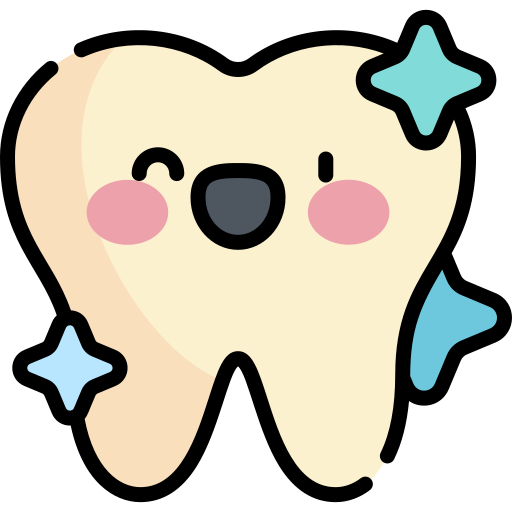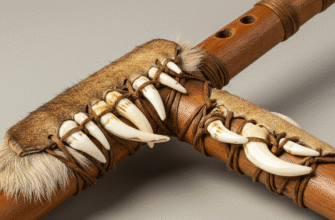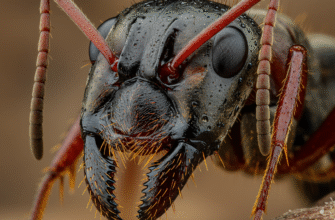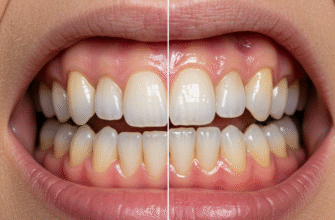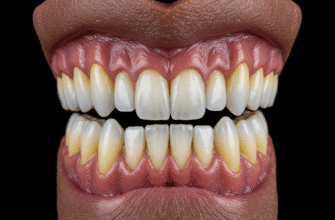Ever tried describing a tiny, specific spot on a complex three-dimensional object without a shared vocabulary? Imagine that object is a human tooth, nestled amongst many others, each with its own unique contours. It quickly becomes apparent that a precise system for identifying and naming different parts, especially the surfaces, is not just helpful, but absolutely essential. This detailed nomenclature forms the bedrock of communication for everyone involved in oral health, from dentists and hygienists to laboratory technicians and researchers. It allows for pinpoint accuracy when discussing, documenting, and treating these vital structures. This exploration delves into the fascinating and highly organized world of naming conventions for human tooth surfaces, revealing the logic behind the language that describes every facet of our teeth.
The Fundamental Framework: Directional Naming
The beauty of the system used to name tooth surfaces lies in its inherent logic, primarily based on direction and relationship to key oral landmarks. Think of it like a compass for your mouth. Before we can navigate, we need a North Star, and in dental anatomy, that’s often the dental midline. This imaginary vertical line splits the dental arches (both upper and lower) into right and left halves, running right between the two central incisor teeth. It’s this midline that serves as a primary reference for several surface names.
Let’s break down the principal surface designations:
- Mesial: This term refers to the surface of a tooth that faces towards the dental midline. If you trace along the curve of your dental arch from a back molar towards your front teeth, the surface of each tooth leading the way in that direction is its mesial surface.
- Distal: Conversely, the distal surface is the one that faces away from the dental midline, towards the back of the mouth. So, on that same journey from back to front, the trailing surface of each tooth is its distal aspect. Mesial and distal surfaces are often collectively called proximal surfaces because they are usually in proximity to, or touching, an adjacent tooth.
Differentiating Facial Surfaces: Labial vs. Buccal
Next, we consider the surfaces that face outwards, towards the face. The general term for this is the facial surface. However, this broad term is further refined based on which part of the face the tooth surface is adjacent to. This distinction is important because the structures these surfaces interact with are different.
- Labial: This name is given to the facial surface of the anterior teeth (the incisors and canines). It’s derived from the Latin word ‘labium,’ meaning lip. So, quite simply, it’s the surface that faces, or is touched by, the lips.
- Buccal: For the posterior teeth (the premolars and molars), their facial surface is termed buccal. This comes from the Latin ‘bucca,’ meaning cheek. These are the surfaces that rest against the inner lining of your cheeks.
The Inner Sanctum: Lingual and Palatal
Moving to the inside of the mouth, we find the surfaces that face the tongue or the palate (the roof of the mouth). This is where another slight differentiation occurs based on whether the tooth is in the upper or lower jaw.
- Lingual: This term is used for the inner surface of all mandibular (lower) teeth and sometimes universally for any tooth surface facing the tongue. It’s derived from ‘lingua,’ the Latin word for tongue. It’s the surface your tongue most commonly rests against or interacts with.
- Palatal: Specifically for maxillary (upper) teeth, the inner surface is often referred to as the palatal surface because it faces the palate. While ‘lingual’ can sometimes be used for upper teeth too, ‘palatal’ offers greater specificity for the maxillary arch.
Where the Action Happens: Occlusal and Incisal Surfaces
Finally, we arrive at the surfaces that do the heavy lifting: the biting or chewing surfaces. Their names differ based on the type of tooth and its primary function.
- Occlusal: This term describes the chewing surface of the posterior teeth (premolars and molars). These surfaces are typically broad and feature a complex landscape of cusps, ridges, grooves, and fossae (depressions) designed for grinding and crushing food. The term ‘occlusal’ relates to the act of occlusion, which is how the upper and lower teeth come together when you bite.
- Incisal: For the anterior teeth (incisors and canines), the biting edge is called the incisal surface or incisal edge. These surfaces are generally narrower and sharper, designed for cutting (incisors) or tearing (canines) food. They don’t typically have the complex topography of occlusal surfaces.
Putting It All Together: Surfaces by Tooth Type
While the directional terms provide a universal language, their application paints a complete picture when we consider the distinct forms of different teeth. Each tooth, whether it’s a sharp incisor or a broad molar, will possess a unique combination of these named surfaces, dictated by its position in the dental arch and its specific job in the orchestra of mastication.
Anterior Teeth: Incisors and Canines
The anterior teeth, comprising the incisors (central and lateral) and the canines (cuspids), are primarily involved in cutting and tearing food. They generally have a more blade-like or pointed structure compared to their posterior counterparts. Typically, an anterior tooth will present with five distinct surfaces:
- The Mesial surface, facing the midline.
- The Distal surface, facing away from the midline.
- The Labial surface, facing the lips.
- The Lingual (or Palatal if it’s an upper tooth) surface, facing the tongue or palate.
- The Incisal edge (or incisal surface), which is the sharp biting portion.
Understanding these surfaces is crucial for tasks like placing fillings, shaping crowns, or even just describing a specific area of concern. For example, a dentist might note “a small chip on the mesio-incisal edge of the upper right central incisor,” a highly specific location pinpointed by these terms.
Posterior Teeth: Premolars and Molars
The posterior teeth, which include the premolars (bicuspids) and molars, are the workhorses of chewing, designed for grinding and crushing. They are generally larger and have more complex biting surfaces. Like anterior teeth, they also typically have five main surfaces, though one name changes to reflect their function:
- The Mesial surface, towards the midline.
- The Distal surface, away from the midline.
- The Buccal surface, facing the cheek.
- The Lingual (or Palatal for upper teeth) surface, facing the tongue or palate.
- The Occlusal surface, the broad, cusped chewing platform.
The occlusal surface itself is a miniature landscape of anatomical features – cusps, grooves, pits, and fossae – each with its own nomenclature, but “occlusal” refers to the entire chewing plane. The distinct names help differentiate issues; a cavity on the buccal surface is very different from one hidden within the grooves of the occlusal surface.
Beyond Single Surfaces: Line and Point Angles
For even greater descriptive precision, dental anatomy also defines line angles and point angles. These aren’t new surfaces themselves but rather refer to the junctions where surfaces meet. A line angle is formed where two individual tooth surfaces intersect. For instance, the junction between the mesial surface and the buccal surface of a molar is termed the mesiobuccal line angle. Similarly, the meeting point of the distal surface and the lingual surface would be the distolingual line angle.
Taking this a step further, a point angle is formed at the corner where three tooth surfaces converge. An example would be the mesiobucco-occlusal point angle on a molar, which is the point where the mesial, buccal, and occlusal surfaces all meet. While these terms add another layer of detail, primarily used in very specific anatomical descriptions or when pinpointing the exact extent of restorations or lesions, a solid grasp of the primary surface names is the foundational requirement.
These combined terms demonstrate the system’s capacity for extreme detail, allowing professionals to map out virtually any specific location on a tooth’s crown with unambiguous language. It highlights how a few core directional principles can be expanded to create a comprehensive descriptive framework.
Mastering the specific names for tooth surfaces isn’t just academic; it’s the cornerstone of precise dialogue in all dental fields. This universal language ensures that whether discussing a patient’s chart or planning a complex procedure, every professional understands the exact location being referenced. Such clarity is absolutely essential for consistent, high-quality dental care and research.
Why This Naming System Matters
The intricate system of naming tooth surfaces might seem like a niche area of knowledge, but its importance extends throughout the entire spectrum of dental care and related sciences. This standardized terminology is far more than just jargon; it’s a critical tool for effective communication. When a dentist communicates with a dental hygienist, a dental assistant, or a laboratory technician creating a crown or bridge, using terms like “disto-occlusal” or “mesiolabial” ensures everyone is on the same page, visualizing the exact same part of the tooth.
This precision is vital for accurate patient records. Detailed notes that precisely locate fillings, decay, wear patterns, or other conditions allow for consistent monitoring of a patient’s oral health over time, even if they see different providers. It ensures a seamless continuity of care. Furthermore, in the realm of dental education, this nomenclature is fundamental. Students must learn and internalize this language to understand anatomy, pathology, and treatment procedures. It forms the basis upon which more complex dental knowledge is built.
Beyond the clinic and the classroom, this system is indispensable for research and literature. Scientific studies on dental materials, disease prevalence, or new treatment techniques rely on this standardized terminology to ensure that findings are universally understandable and comparable. In essence, what might appear as a simple list of directional names is actually the sophisticated linguistic scaffolding that supports clarity, precision, and advancement in the multifaceted world of oral health.
